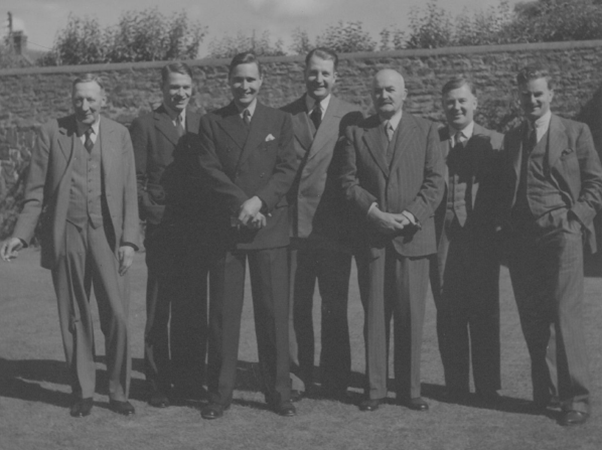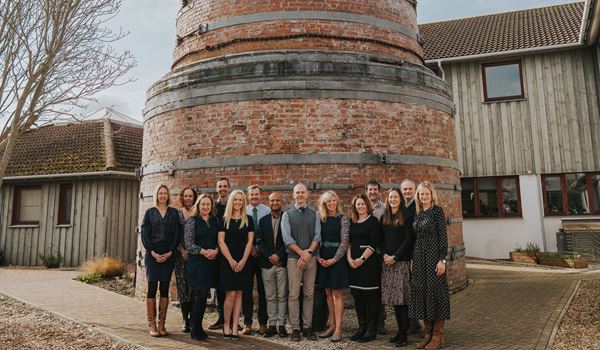About Brannam Medical Centre
Brannam Medical Centre is a partnership consisting of 12 doctors and 1 pharmacist leading a team of doctors, nurses, advanced clinical professionals, healthcare assistants, receptionists and administration staff working hard to deliver a wide range of excellent primary care medical services to over 19,500 patients.
Learn more about our team here.
Our services are commissioned by Devon Integrated Care Board (ICB)
NHS Devon Integrated Care Board
Newcourt House
Old Rydon Lane
Exeter, EX2 7JU
0300 123 1672

Barnstaple Alliance
The Barnstaple Alliance is a voluntary association of the four General Practitioner surgeries: Brannam, Fremington, Litchdon and Queens.
Whilst retaining our independent surgeries, we are working together on collaborative projects to improve and develop our healthcare services and care given to patients. To find out more please visit the website
Our History
The Practice dates back almost 150 years, and many respected former partners are part of local 'folk-lore'. Fortunately, one of those partners, Dr Brook who joined the practice in 1938, wrote an account of the early history of the practice, and some of the key events are summarised below.
Our founder, Dr Charles R. Morgan (b.1821) of Torrington, trained at the Middlesex Hospital in London, before returning to his native Devon in the 1850s. He was listed as a General Medical Practioner in the 1861 census, living at Boutport Street in Barnstaple, and in 1852 he took on Joseph Harper (b.1838) as his apprentice. Joseph also trained at the Middlesex Hospital, returning to Barnstaple in 1864, when he signed a partnership deed with Dr Morgan. In 1866 Dr Morgan was in poor health and died suddenly, leaving Dr Harper to succeed the practice. By 1870, he had moved the short distance to Bear Street, from where the practice was run for many years, and in 1876, he signed a partnership with Dr Henry Jackson, though incorporating a clause which would later enable Dr Harper to admit his son John into the firm in 1894, following his training at St Thomas Hospital, London.
In 1886, Dr Jackson was replaced by his brother Mark, who was brought in specifically to supervise the dispensary and compounding of medicines, and remained with the practice until 1902. Dr Herbert Jonas was next to join, another St Thomas man. His wife had been one of the last sisters at St Thomas Hospital to have been personally interviewed by Florence Nightingale.
In the 1900s, the first motor cars were beginning to replace the horse and carriage in Barnstaple, and Dr Joseph Harper, was one of the first to place an order with Prideaux's garage in the town. The Harper family could long remember the sound of the starting handle winding, followed by the jigger of the carburettor and finally the judder of the engine causing the large Wolseley to shake. For many years Dr Harper did night calls on foot, rather than face the ordeal of getting the car to start.
In 1906, Dr John Harper's brother-in-law, Dr Toby Gibbs joined the practice, and just a few years later, both Gibbs and Harper were mobilised at the onset of the First World War.
In January 1921, the firm decided to take on a fourth partner in Dr Simeon Shaw, who had trained at the Middlesex Hospital. He lived in Coronation Street and made his rounds on a motorbike and sidecar, before later settling at Trafalgar Lawn.
Dr Richard (Dick) Harper, John's only son became a partner in 1931, following his training at St Thomas Hospital, and he was followed by Dr Kenneth Saunders, who was appointed in 1932, around the time of John's retirement.

Above: Left to Right - Dr Herbert Jonas; Dr Gordon Brook; Dr Dick Harper; Dr Richard Gilbert; Dr John Harper; Dr Simeon Shaw and Dr Kenneth Saunders. Photograph taken in Dr Harper's garden, opposite the Boutport entrance to Green Lane's Shopping Centre.
Many partners came and went over the years that followed including Dr Richard G. Gilbert (1935), Dr Gordon Brook (1938), Dr James A. Smart (1946), Dr John P. Bush (1948), Dr James A. Forman (1950), Dr Bruce Osborne (1959), Dr Jeremy D. Bartlett (1965), Dr John L. Lewis (1966), Dr Roger Cole (1971), Dr David F. Gibson (1973), Dr Thomas L. Bigge (1975), Dr John A. Marston (1976), Dr Ian F.M Jack (1978), Dr Peter V. Lippiett (1980), Dr Andrew Bargery (1984), Dr Simon Wolff (1986), Dr Charlotte P. McCaie (1987), Dr Zseusa Reynolds (1996), Dr Robert Bunney (1991), Dr Peter Taylor (1993), Dr Ben Waterfall (2010), Dr Jackie Tolhurst, Dr Iain Stewart, Dr Zoe Carlino, Dr Khlaed Shihaiber, Dr Miranda Coberman
In 1994 we moved to our current purpose-built medical centre on the former Brannam Pottery site (pictured at the top of this page).
Our current team of GPs now includes partners Dr Tim Chesworth (2006), Dr Louise Bond (2007), Dr Melanie Deacon (2008), Dr Suzanne Smit (2010), Dr Ed Matthews (2013), Dr Oliver Hassall (2014), Dr Sarah Street (2018), Dr Amy Parkinson (2018), Dr Harry Cormack (2020), Dr Simon Stacey (2023), Dr Clare Hollister (2023), Dr Ujjwol Joshi (2023), Rachel Nestel (Clinical Pharmacist 2021) and salaried GPs Dr Charis Milili (2023), Dr Victoria Sebbage (2023), Dr Natasha Wood (2024), Dr Peter Abouelsaad (2025).

A Brief History of Brannam Pottery
Thomas B. Brannam (born 1815) followed family tradition by entering the pottery trade, learning his skills through an apprenticeship at Cleavehouse Potteries in Bideford before settling in Barnstaple in 1837. By 1853 he had acquired the site near Litchdon Street. When Thomas retired in 1881 he was succeeded by his ambitious son, Charles H. Brannam (born 1855) who quickly gained a name for quality. He recruited highly skilled designers but continued to throw the pottery himself. The North Devon Journal reported that Charles began to produce "a class of ware which is quite unique, both as regards exquisite colour and lustre and artistic finish".
In 1885, after receiving an order from Queen Victoria, Charles registered the business as "Royal Barum Ware" which went on to receive worldwide fame. When his father, Thomas died in 1897, his obituary in the North Devon Journal praised their success: "The industry has become a very important one and is still developing rapidly. The growth of the business to which the late Mr Brannam succeeded is a marvellous example of what can be accomplished by originality and well-directed enterprise".
Charles continued to oversee the pottery at Brannam until his death in 1937. The business remained at the Litchdon Street site until relocating to Roundswell Industrial Estate in 1990. The old kiln still remains at the site (pictured right) and features in our practice logo.

Page created: 27 January 2023